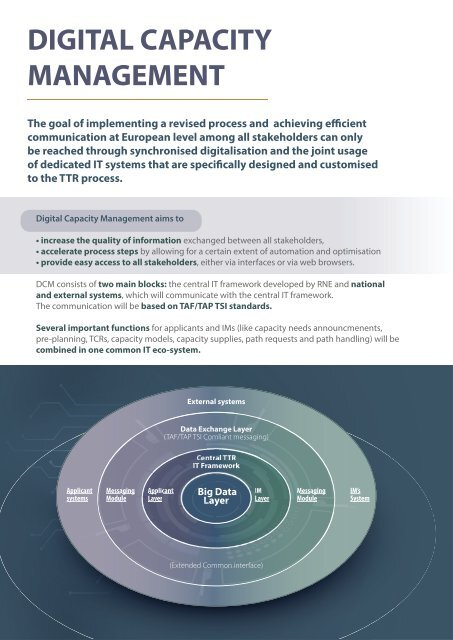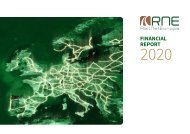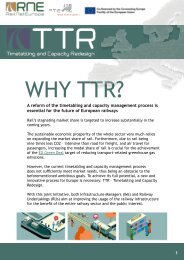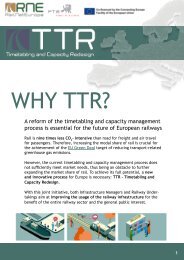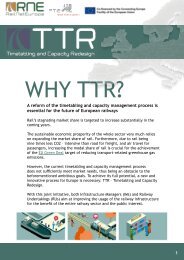TTR_Extended_Brochure_2023
You also want an ePaper? Increase the reach of your titles
YUMPU automatically turns print PDFs into web optimized ePapers that Google loves.
DIGITAL CAPACITY<br />
MANAGEMENT<br />
The goal of implementing a revised process and achieving efficient<br />
communication at European level among all stakeholders can only<br />
be reached through synchronised digitalisation and the joint usage<br />
of dedicated IT systems that are specifically designed and customised<br />
to the <strong>TTR</strong> process.<br />
Digital Capacity Management aims to<br />
• increase the quality of information exchanged between all stakeholders,<br />
• accelerate process steps by allowing for a certain extent of automation and optimisation<br />
• provide easy access to all stakeholders, either via interfaces or via web browsers.<br />
DCM consists of two main blocks: the central IT framework developed by RNE and national<br />
and external systems, which will communicate with the central IT framework.<br />
The communication will be based on TAF/TAP TSI standards.<br />
Several important functions for applicants and IMs (like capacity needs announcmenents,<br />
pre-planning, TCRs, capacity models, capacity supplies, path requests and path handling) will be<br />
combined in one common IT eco-system.<br />
External systems<br />
Data Exchange Layer<br />
(TAF/TAP TSI Comliant messaging) g)<br />
IT Framework<br />
r<br />
Applicant<br />
systems<br />
Messaging<br />
Module<br />
Applicant<br />
plica<br />
Layer<br />
Big Data<br />
Layer<br />
Layer<br />
Messaging<br />
sa<br />
Module<br />
IM’s<br />
System<br />
(<strong>Extended</strong> Common mon interface)


